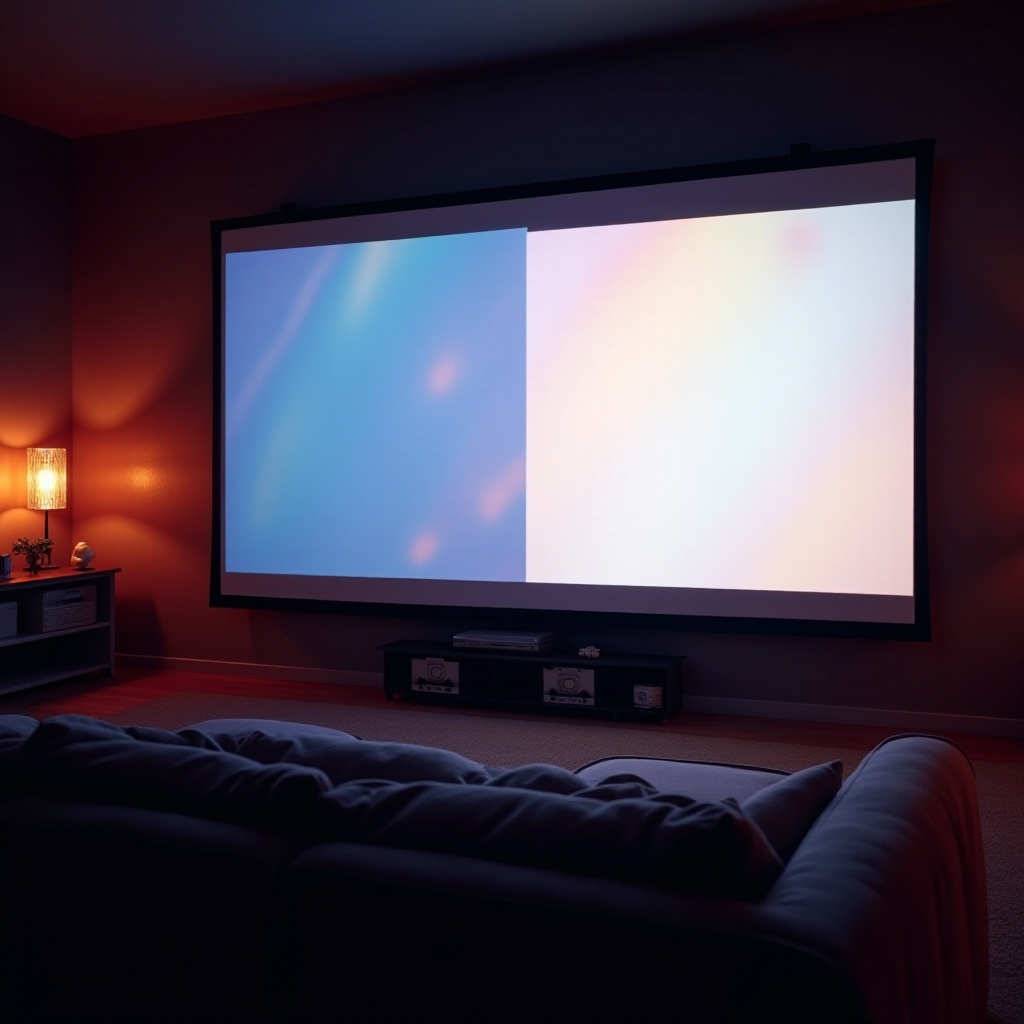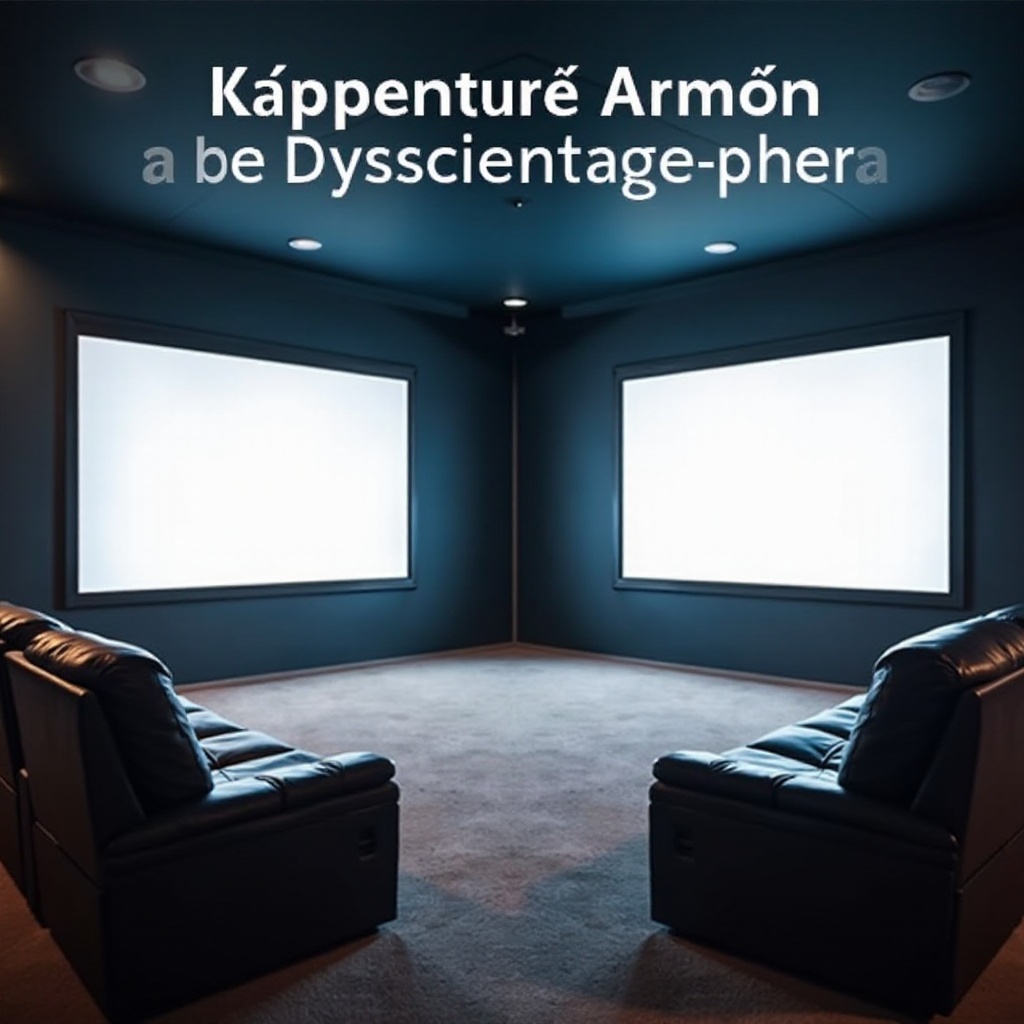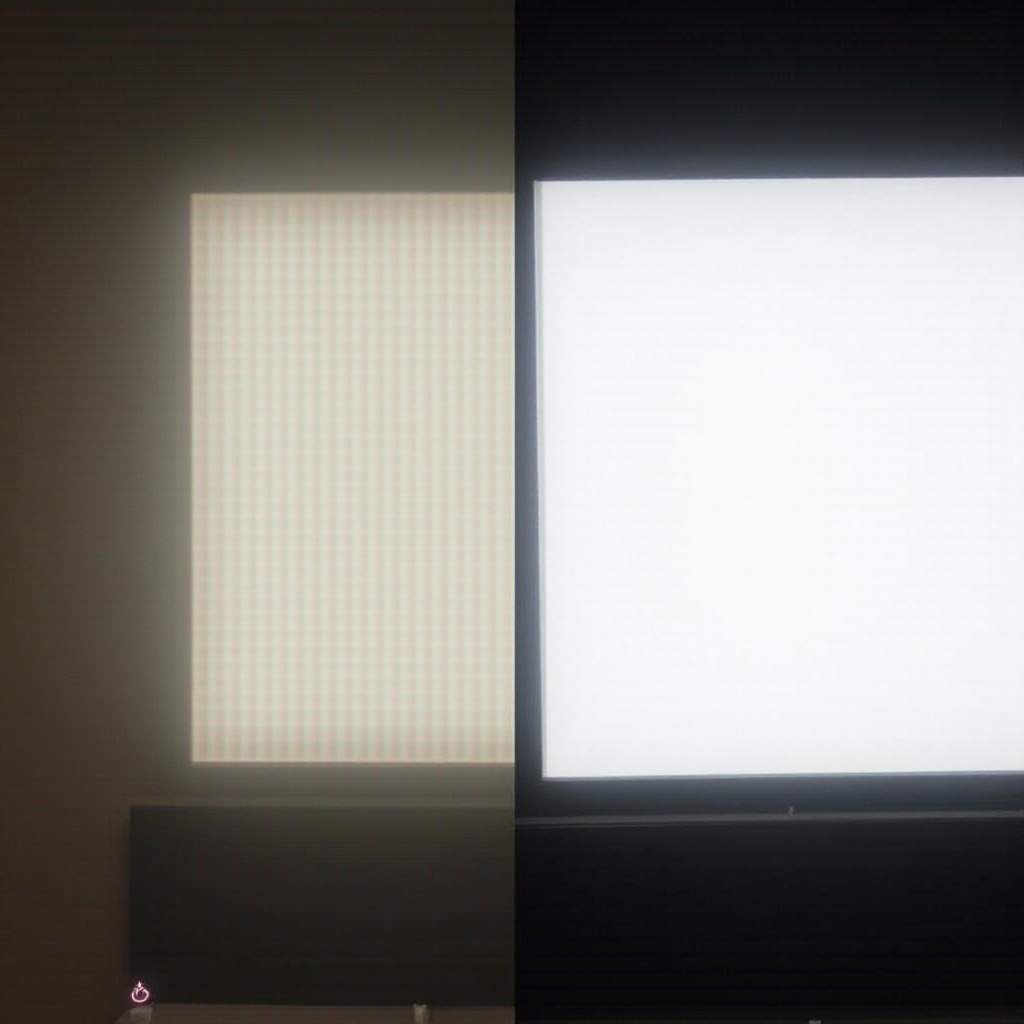Introduction
Choosing the right screen for your projector can significantly enhance your viewing experience. Whether you are setting up a home theater, a conference room, or an educational space, the type of screen you use is paramount. Two of the most popular options are ALR (Ambient Light Rejecting) screens and traditional white screens. This blog will guide you through what each screen type offers, key differences, performance insights, practical applications, cost considerations, and maintenance guidelines. By the end, you will be well-equipped to make an informed decision.

What is an ALR Screen?
An Ambient Light Rejecting (ALR) screen is designed to mitigate the impact of ambient light on the projected image. This means that even in a well-lit room, the screen can deliver clear, high-contrast images. ALR screens achieve this through a special material that selectively reflects the light coming from the projector while absorbing or deflecting ambient light. The result is a vibrant and crisp picture, making ALR screens ideal for spaces where controlling ambient light is challenging. They are commonly used in living rooms, conference rooms, and other multi-purpose spaces where lighting conditions can vary.
What is a White Screen?
A white screen is the traditional choice for projector setups. It features a smooth, matte white finish that evenly reflects the projected light across the screen surface. This basic, yet effective option provides a neutral backdrop, allowing for natural colors and maintaining decent image quality in a moderately controlled lighting environment. White screens are widely used due to their simplicity, availability, and cost-effectiveness. They are particularly suitable for dedicated home theaters or classrooms where ambient light can be adequately controlled.
Key Differences Between ALR and White Screens
While both ALR and white screens are used in projector setups, there are some important differences to consider:
- Ambient Light Handling: ALR screens are superior in handling ambient light, making them suitable for bright rooms. White screens perform best in controlled, dark environments.
- Image Quality: ALR screens offer higher contrast and more vibrant colors in various lighting conditions. White screens provide a natural and balanced image in optimal conditions.
- Material: ALR screens are made of specialized materials that reflect projector light while rejecting ambient light. White screens are made from a matte, reflective material.
- Installation Flexibility: ALR screens can be effective in multi-purpose rooms with fluctuating light conditions. White screens need environments with controlled lighting for optimal performance.
- Cost: ALR screens are generally more expensive due to the advanced technology and materials involved. White screens are cheaper and more widely available.
Understanding these differences will help you align your choice with your specific needs and environment.

Performance Comparison
When considering performance, it’s essential to evaluate how each screen type performs in different environments and use cases.
Picture Quality in Various Lights: ALR screens excel in rooms with ambient light, ensuring that the image remains clear and vibrant. They prevent washout that often occurs with white screens in similar conditions. If you plan to use the projector in a room that can’t always be darkened, an ALR screen is your best bet.
Viewing Angles: Both ALR and white screens offer good viewing angles, but ALR screens can sometimes limit angles due to their reflective properties. Consider the seating arrangement when making your choice.
Compatibility with Projectors: ALR screens require higher lumen projectors to achieve the best results since they need ample light to reflect correctly. White screens are more forgiving and compatible with a broader range of projector types.
Taking these performance elements into account ensures you opt for a screen that complements the projector and viewing conditions.
Practical Use Cases
Let’s connect the differences between ALR and white screens to practical applications to help determine which screen suits your needs.
- Home Theaters: For a dedicated dark room, a white screen offers excellent image quality and color accuracy. If the room isn’t entirely dark, an ALR screen provides better performance.
- Living Rooms: In spaces with fluctuating lighting conditions, ALR screens are ideal due to their ability to reject ambient light.
- Conference Rooms: If you cannot control the lighting, an ALR screen ensures presentations are clear and readable. However, for rooms with controllable lighting, a white screen is sufficient.
- Classrooms: White screens are effective where the focus is on cost and ease of use, and lighting can be managed. ALR screens could be used in rooms with large windows or bright lighting.
Cost Comparison
Comparing costs, ALR screens are generally on the higher end due to their sophisticated technology designed to reject ambient light. Prices can vary based on brand and size, but expect to pay more compared to white screens. White screens are more budget-friendly and easier to find, making them an economical choice for those with controlled lighting environments.
Maintenance and Durability
Understanding maintenance and durability can also impact your decision. ALR screens, due to their complex materials, might require more careful handling and periodic cleaning to maintain their performance. They are, however, built to last under diverse lighting conditions.
White screens are easier to clean; a simple wipe with a damp cloth often suffices. They are durable under optimal conditions but may show wear and tear sooner if exposed to inconsistent lighting and handling.

Conclusion
Selecting the right screen for your projector setup depends on various factors including your environment, budget, and specific needs. ALR screens are a premium choice for bright rooms and multi-purpose spaces, while white screens are ideal for controlled lighting conditions. Evaluate your requirements to make the best choice for an enhanced viewing experience.
Frequently Asked Questions
What are the benefits of using an ALR screen?
Improved Image Quality: Clear and vibrant images even in well-lit rooms. Versatile Applications: Suitable for various spaces including living rooms and conference rooms.
Are white screens good for bright rooms?
No, white screens are best used in environments where lighting can be controlled and minimized.
How do I choose between an ALR screen and a white screen?
Consider Lighting: ALR for bright, uncontrolled light; White for dark, controlled environments. Budget: ALR screens are more expensive; White screens are cost-effective. Use Case: Evaluate the primary use, room setup, and seating arrangement.